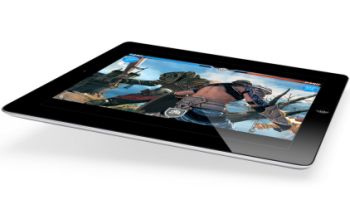iPad 2 Manufacturing Cost Only Slightly Up On Original

Despite pricier components, the overall bill of materials for Apple’s iPad 2 is similar to the first edition
The Apple iPad 2 may be a leaner, meaner and faster-processing machine than its predecessor, but these marked improvements come at only a modestly higher price to Apple, according to a 13 March report from research firm IHS iSuppli.
The 32GB, GSM/HSPA (High-Speed Packet Access) version of the iPad 2 – the model available from AT&T – has a BOM (bill of materials) of $326.60 (£200), which jumps to $336.60 when manufacturing costs are included, reports the firm, while the 32GB CDMA (Code Division Multiple Access) model, with 3G connectivity from Verizon Wireless, comes in at $323.25, or $333.25 with manufacturing costs. By comparison, the first-generation, 32GB 3G iPad had a BOM of $320.
Similar components
“Despite the obvious changes to iPad like the enclosure and the battery, and the less obvious changes in the touch-screen, the iPad 2’s components and design are remarkably similar to if not the same as those of the iPad 1,” Andrew Rassweiler, IHS iSuppli’s senior director, principal analyst and teardown services manager, said in a statement.
Apple has used the same components and suppliers for the NAND flash, the multi-touch controllers and touch-screen drivers, for both the new and old iPads, as well as the same core chip in the wireless section as is in the iPhone 4, said the report.
“Many of the other components – including the apps processor and the Bluetooth/frequency/global positioning system/wireless local area network chips,” it added, “have the same suppliers and are essentially new revisions of the chips found in the previous iPad and other iPhones.”
The iPad 2’s highest-cost item – $127 for each carrier’s model – is the display and touch-screen, up from the $95 that IHS iSuppli estimated for the original iPad, considering pricing in April 2010. Most of that cost is attributable to the 9.7-inch touch-screen.
“The reason for the increase comes in large part from manufacturing challenges that the touch-screen manufacturers have experienced since beginning production,” states the report. “Production yields, though they have been improving, have been very low throughout 2010, and drove prices to be much higher than initially expected.”
Refinements in the touch-screen specifications have also driven up the iPad 2’s price point, the report adds, along with “more expensive glue to improve the efficiency/performance in the bonding, thinner Gorilla cover glass, and a more detailed inspection process requiring additional equipment for optical and panel examination.”
Behind the touch-screen and display comes the iPad 2’s memory, at $65.70 in both cases, and then mechanical and electromechanical bits – glass, metal and plastic enclosures, connectors, etc. – at $35 for the AT&T version and $35.50 for the Verizon model. More notable, however, is the tablet’s new battery, the fourth most expensive item on the list at $25 for each model. The batteries are thinner than their predecessors, have three cells instead of two and cost $4 more – a price it seems was well worth it.
Battery life
“Apple never takes a standard approach with batteries and challenges its vendors to create unique solutions to accommodate their desired form factor,” states the report. “Although other manufacturers are using similar flat-pack batteries, these incredibly thin batteries, and special battery-management circuitry just for Apple batteries, provide an exceptional result.”
The enviable battery life, size and weight of the iPad 2, as well as Apple’s iPhones and iPods, reports IHS iSuppli, come thanks to the company’s power-management circuitry.
Finally, another must-see on the iPad 2 teardown tour is the tablet’s A5 processor. While it adds just $14 to the BOM, that’s a 75 percent increase from the iPad’s Samsung-built A4 processor. As Apple increases production over the course of the year, however, IHS iSuppli expects that price to drop.
The firm further explained, “Apple owns the intellectual property and, as such, whoever builds the A5 processor for them is doing so as more of a foundry service – like a contract manufacturer – which gives Apple a huge competitive cost edge on the piece price of these processors.”
Other notable contributors to the BOM include the iPad 2’s connectivity chips, tallying $18.70 for the AT&T model and $16.35 for the Verizon version; the user interface, at $11.90; and the power-management components, at $10.20. Surprisingly, pricier than its front and back cameras, at $4.30, are the accessories and literature inside the iPad 2’s box, along with the box itself, which comes in at 20 cents shy of $6.
